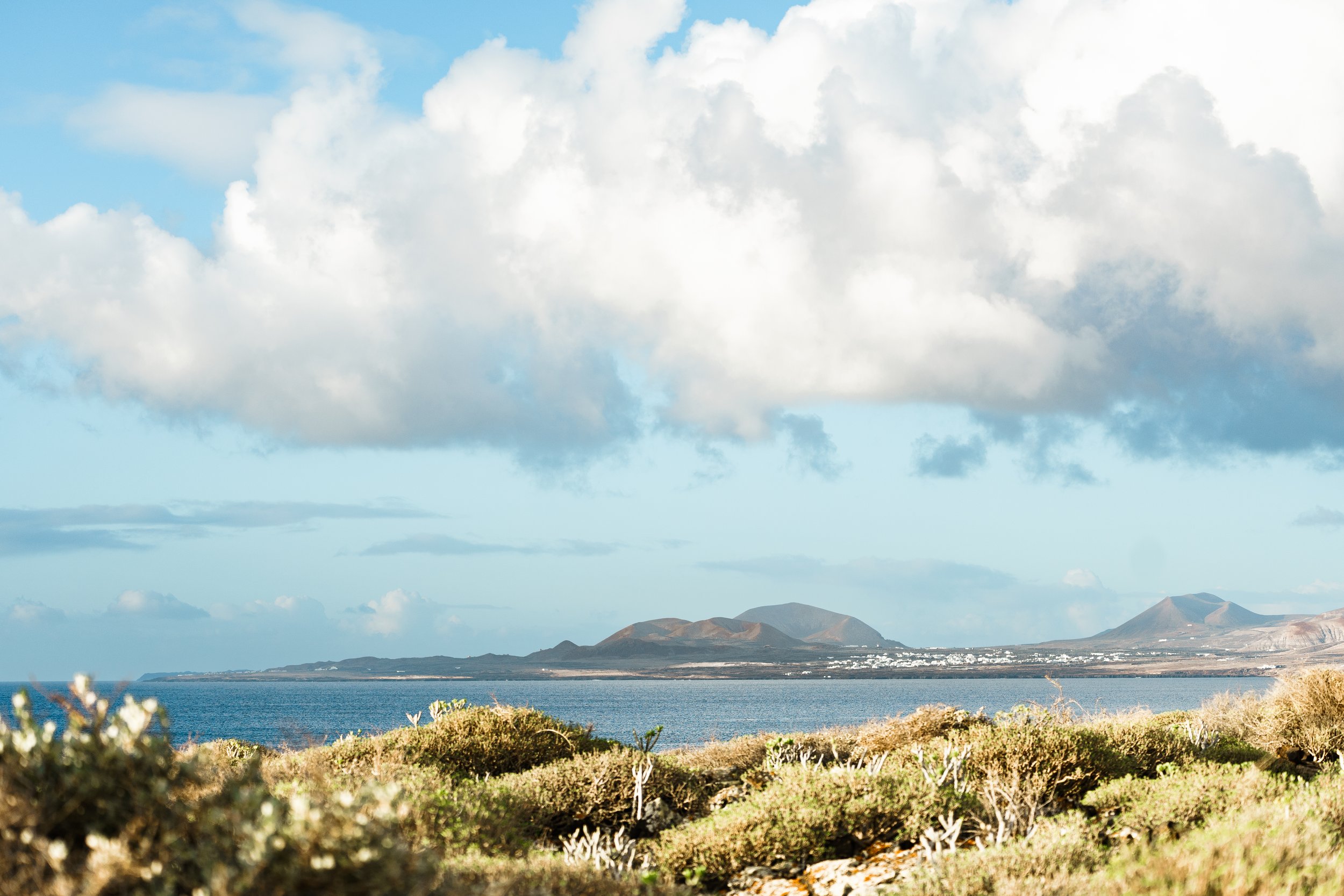
Lanzarote, 2022
To illustrate how small Playa de Famara is, the one grocery store in the town was not only pricey, but also tiny. Though it was a great source to feed my newly found Jamon addiction, herbs and vegetables were sparse. As was the fresh baked bread I had gotten used to in Fuerteventura, which is where I had arrived from.
Famara is the most well known break on the island of Lanzarote, located just north of Fuerteventura, mostly shut down around 8 or 9 pm and I could probably count the number of food establishments on less than three hands. The town sat on a bay on the northeast coast and was dwarfed by a massive cliff sprouting out of the ocean to the northwest. I realized by the time I left, that many people will stay in the larger towns and cities on the island and will always make the short drive for the day and then leave, missing out in my humble opinion.
Though, admittedly, I did drive south out of town many days only to make a u-turn at the first traffic circle to head north, taking me to the greener north side of the island, on the other side of the hulking cliffs looming over Famara. (I should've mentioned by now that being on the Canaries usually means there’s a volcano nearby, and I was in awe of them since I first drove my rental car through Fuerteventura the first night, not really seeing so much as sensing the looming figures around me.) Sprinkled with volcanoes, moss and actual greenery, it was a relief after barely seeing a natural tree for over a month. My theory on the relative lushness was that the geography on the north of the island trapped moisture, and/or attracted cloud cover, bringing increased moisture.
I often gravitated toward “Los Helechos”, a set of volcanoes surrounded by the innovative agricultural practices needed to grow in the volcanic soil. This area in general was a “water well” of sorts for the island and where much of its food was grown before imports.
By the time I made it to Lanzarote, it was well into march and the trade winds were full effect. Waves were often blown out, leaving space for me to hike and explore more (read: drive for hours in search of waves). Though the good days, and the fact that I didn’t get a chance to see La Santa, the famed slab, break actually well, convinced me that just need to return in December.
A site called Jameos de Agua was also located on the quiet northwest coast. Like my ignorance of the developed resorts in the south of the island, driven by the pursuit of jaw-dropping landscapes and fun waves, I had also largely neglected to visit the many sites on the island developed by Cesare Manrique, an artist from Lanzarote who had left a distinct visual and cultural imprint. I first visited Jameos because of the break, not the museum. Thwarted by the maze-like (ok, I should've just driven around a corner) parking lot filled with tourist vans, I initially missed it. Or it was just flat, as it is many times on this side of the island . Eventually after finding my way through the maze one day, I kept checking that spot over and over, because although inconsistent, it was a gorgeous left point break and was my favorite wave on the island by far. It was so fickle (or I was so impatient) that I didn’t manage to get a great shot of it before I left.




























